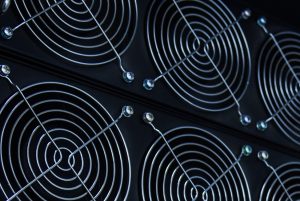 Ambient cooling is one of the simplest methods of electrical cooling, though it hasn’t always been a viable solution for industrial-sized applications. The process involves keeping the temperature within an electrical enclosure at just above the ambient temperature outside of it. In its simplest form, this can mean using a low-energy filter fan to blow away excess waste heat. Yet, within a tightly sealed electrical enclosure, ambient cooling requires a way to remove the waste heat to prevent it from accumulating within the enclosure. Modern heat exchangers provide a variety of ways to do this, giving companies a range of choices in advanced ambient cooling methods.
Ambient cooling is one of the simplest methods of electrical cooling, though it hasn’t always been a viable solution for industrial-sized applications. The process involves keeping the temperature within an electrical enclosure at just above the ambient temperature outside of it. In its simplest form, this can mean using a low-energy filter fan to blow away excess waste heat. Yet, within a tightly sealed electrical enclosure, ambient cooling requires a way to remove the waste heat to prevent it from accumulating within the enclosure. Modern heat exchangers provide a variety of ways to do this, giving companies a range of choices in advanced ambient cooling methods.
The simplest methods of ambient cooling
Modern heat exchangers are designed on the principles of transferring heat, though they typically use more complex methods than simply fanning away waste heat. For instance, in many ambient cooling heat exchangers, an eco-friendly cooling fluid is able to absorb the waste heat that electrical components produce, then rapidly transfer it to a heat sink in another part of the heat exchanger. The method is still vastly less complex than traditional electrical cooling methods, like air conditioning, but is more direct and intuitively designed than simply blowing away electrical waste heat.
Filter fans and eco-friendly cooling fluid
The reason ambient cooling is an effective cooling method for modern technologies is because most have maximum operating temperatures that are far above the ambient temperatures outside of the electrical enclosures. However, the more advanced some systems become, the more electrical waste heat they produce. To meet the growing demand for more advanced electrical cooling, ambient heat exchangers can often combine the use of an eco-friendly cooling fluid and one or more specially designed filter fans to promote faster heat transfer processes. The fans can propel the fluid after it has absorbed the waste heat, improving the rate of heat transfer for heat exchangers that are designed to handle larger amounts of waste heat.
The advantages of modern ambient cooling
The difference between ambient cooling (even more advanced methods) and traditional air conditioning is that the former doesn’t require the use of chilled air to cool electrical enclosures. This allows for greater efficiency, a much lower need for energy, and cooling units that require little or no maintenance. The more natural principles of transferring waste heat are also more easily manageable, making cooling units based on advanced ambient cooling more easily adaptable to evolving technological applications.
For more information about advanced methods of high-performance ambient cooling, call Noren Thermal Solutions in Taylor, TX, at 866-936-6736.







